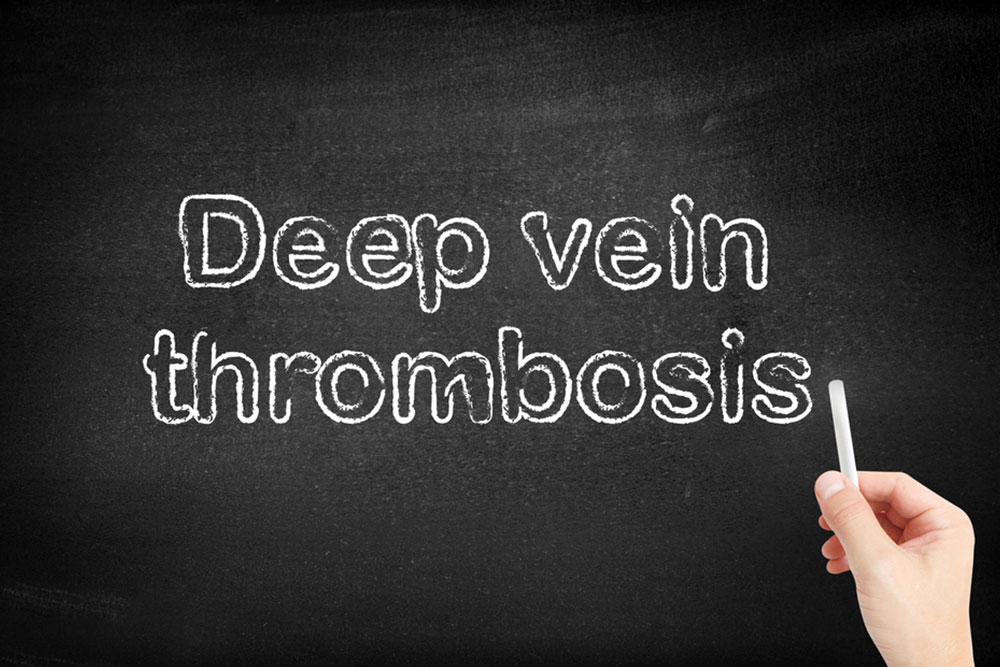Comprehensive Guide to Deep Vein Thrombosis: Causes, Risks, and Advanced Treatment Strategies
Deep Vein Thrombosis (DVT) is a serious condition involving blood clots in deep veins, especially in the legs. This comprehensive guide explains its causes, risk factors, symptoms, and modern treatment options including vena cava filters, thrombectomy, and minimally invasive procedures. Early diagnosis and preventive measures are crucial to avoid complications like pulmonary embolism. Staying informed about DVT can help in early intervention, reducing health risks. This detailed overview aims to educate readers about DVT management and advances in treatment, emphasizing the importance of prompt medical attention.

Deep Vein Thrombosis (DVT) is a serious medical condition characterized by the formation of blood clots within the deep veins, most commonly in the legs and pelvis. Although it can occur at any age, the risk significantly increases in individuals over 60 years old. This condition requires prompt diagnosis and treatment due to the potential for life-threatening complications such as pulmonary embolism. Understanding the underlying causes, risk factors, symptoms, and the latest therapeutic options is crucial for effective management and prevention.
Deep veins are responsible for returning deoxygenated blood from the limbs back to the heart. When a clot develops in these veins, it can obstruct blood flow, causing swelling, pain, and redness. If parts of the clot dislodge and travel through the bloodstream, they can block arteries in the lungs, leading to a pulmonary embolism, which can be fatal. Recognizing the signs early and understanding the factors contributing to DVT are vital steps in reducing its impact.
Causes and Pathophysiology of Deep Vein Thrombosis
The formation of blood clots in DVT primarily results from a disruption in normal blood flow, damage to the blood vessel walls, or abnormal blood clotting tendencies—a triad known as Virchow's triad. Several conditions and behaviors can predispose individuals to develop DVT:
Prolonged immobilization: Extended periods of bed rest, sedentary behavior, or long-distance travel can cause sluggish blood flow, increasing clot formation risk.
Trauma or injury: Fractures or damage to blood vessel walls in the legs or pelvis can facilitate clot development.
Surgical procedures: Especially those involving the lower limbs or pelvis, surgery can induce a hypercoagulable state post-operation.
Obesity: Excess weight puts additional pressure on leg veins and contributes to sluggish blood flow.
Hormonal factors: Elevated estrogen levels from pregnancy, contraceptive pills, or hormone replacement therapy can increase clotting potential.
Genetic predispositions: Family history of clotting disorders or inherited conditions like Factor V Leiden mutation elevate risk.
Other contributing factors: Conditions such as autoimmune diseases like lupus, active cancers, and excess platelet production can further promote thrombosis.
Additional Risk Factors and Lifestyle Considerations
Beyond the primary causes, certain lifestyle and health factors can amplify DVT risks:
Smoking: Nicotine and other chemicals damage the blood vessel lining, fostering thrombosis.
Autoimmune conditions: Diseases like lupus induce inflammatory responses that can lead to clot formation.
Cancer: Malignancies often increase coagulability through tumor-related substances or treatments.
Use of estrogen-based medications: Contraceptives or hormone therapy can heighten blood's tendency to clot, especially in predisposed individuals.
Sitting for extended periods: Long flights or sedentary work habits can cause venous stasis, increasing DVT risk.
Recognizing Symptoms and Diagnosing DVT
While some individuals with deep vein thrombosis may experience noticeable symptoms, others remain asymptomatic, making diagnosis challenging. Common signs include:
Swelling in one leg or arm
Persistent pain or tenderness, especially when standing or walking
Redness or discoloration of the skin
Sensation of warmth in the affected limb
If DVT is suspected, healthcare providers utilize various diagnostic tools such as ultrasound Doppler imaging, venography, and blood tests (like D-dimer levels) to confirm the presence of a clot and assess its extent.
Advanced Therapeutic Options for Deep Vein Thrombosis
Modern medicine offers several effective treatments aimed at dissolving or removing blood clots and preventing complications. Treatment strategies depend on the clot's location, size, and patient-specific factors, including underlying health conditions.
1. Vena Cava Filter Implementation
This minimally invasive procedure involves placing a small, cage-like device into the vena cava—the large vein transporting blood from lower limbs back to the heart. The filter traps dislodged clots before they can reach vital organs such as the lungs, thereby preventing pulmonary embolism. Placement is typically performed via catheter insertion through a vein in the arm, leg, or neck. Vena cava filters are especially useful for patients who cannot tolerate anticoagulant medications or in cases where blood clots continue to circulate despite treatment.
2. Venous Thrombectomy
In cases where blood clots are large or resistant to conventional therapy, surgical removal through venous thrombectomy may be necessary. This procedure involves physically extracting the clot from the affected vein, often guided by real-time imaging techniques like ultrasound or fluoroscopy. Since it is an invasive procedure, it is generally reserved for severe cases, especially when there is significant limb swelling, tissue damage, or impending tissue loss. Postoperative management includes anticoagulants and measures to prevent recurrence.
3. Percutaneous Mechanical Thrombectomy
This minimally invasive intervention employs a catheter equipped with mechanical devices to fragment and extract the thrombus. High-speed jets or rotating devices break up the clot, which is then aspirated or removed through the catheter system. This technique offers faster clot dissolution compared to anticoagulation alone, reduces the risk of pulmonary embolism during treatment, and preserves venous function. It is often combined with thrombolytic therapy to enhance clot breakdown.
Preventive Measures and Lifestyle Modifications
Prevention plays a crucial role in managing DVT risk, especially for individuals with predisposing factors. Lifestyle changes such as regular physical activity, maintaining a healthy weight, and avoiding prolonged periods of immobility are essential. For those at higher risk, physicians may recommend prophylactic anticoagulant medications during high-risk periods, such as post-surgery or long-distance travel.
Conclusion
Deep Vein Thrombosis remains a significant health concern due to its potential for severe complications like pulmonary embolism. Understanding its causes, risk factors, symptoms, and available treatment options equips patients and healthcare providers with the knowledge needed for early detection, effective management, and prevention. Advances in minimally invasive procedures and anticoagulation therapy continue to improve outcomes, reducing morbidity and mortality associated with this condition. If you suspect DVT symptoms or belong to a high-risk group, consult a healthcare professional promptly for diagnosis and tailored treatment planning.





